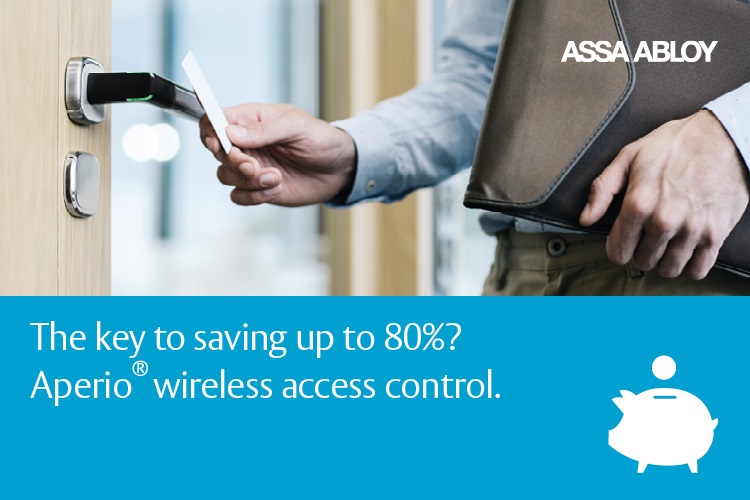Your electronic security could save you money at every stage of its life-cycle - if you pick the right locks
Installation is where it all begins. Installation stage is also the largest contributor to the potential cost saving in choosing wireless. In calculations for a recent cost savings report, ASSA ABLOY experts examined likely costs of a 100-door installation. Labour cost savings for those who chose wireless versus wired locks were a staggering 82.5%*.

Yes, you read that right. Installing battery-powered locks versus wired locks would save you over 80% in the labour cost of specialist access control installers.
Wireless installation is much faster; it is also less intrusive. Leading wireless locks require little or no drilling around the door, whereas wired access control needs cabling through and partly around the door. You can upgrade building security without inconveniencing your staff or disturbing everyday work routines.
Energy savings can contribute to business sustainability goals
According to the Harvard Business Review, energy efficiency has become one of the “key levers for business success”**. Battery powered wireless locks use less energy than traditional wired locks, which normally work via magnets connected permanently to electricity.
Wireless locks work differently. They only “wake up” when presented with a credential for which they must make an access decision. This translates into another potentially large saving on your annual energy budget: more than 70%*, or thousands of euros over a typical access control installation’s lifetime.
Other related energy and material costs are also lower for wireless locks. During operation, wireless locks require just a battery change — once every two years (approximately).
Wireless locks also provide more flexibility — and can reduce costs — when you reconfigure or expand office space. High-quality wireless locks can typically be reinstalled at another door without impacting their reliability. You can move them to wherever is convenient. Typical cost savings on your next office relocation or expansion are around 30%* with wireless over wired locking.
Choosing cost-saving wireless locks
Aperio wireless locks can save you money at every stage of their life-cycle. Battery-powered Aperio RFID-equipped cylinders, escutcheons, handles and locks can be fitted as a new access control system or extend an existing installation by linking new doors to the same system wirelessly. There’s no need for staff to swap their key-cards, nor for anyone to carry more than one credential. They work seamlessly within almost every major access control system on the market, from over 100 different manufacturers. One control panel manages everything — Aperio and legacy locks.
Installion is quick, because there’s no cabling around the door, no invasive building work, and no need to change door hardware. Aperio devices fit almost any opening or security level, exterior and interior doors — wood, glass or aluminium — from fire and escape doors to meeting rooms, labs and offices.
To find out how much you could save by making the switch to wireless locks, you can download a free screen paper with project cost calculations.
*: Assa Abloy in-house calculations. See report













